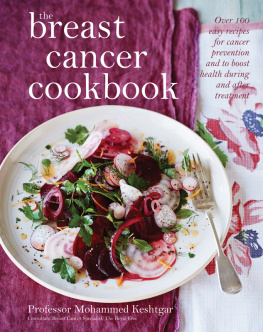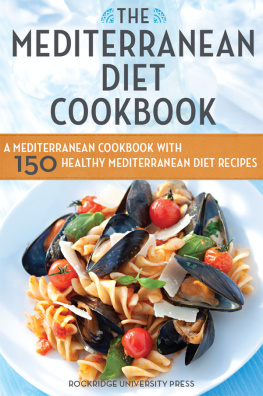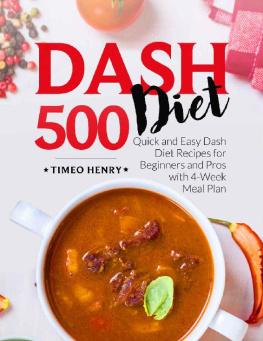Sensational Soy:
Recipes for a Healthy Diet
Miriam Jacobs
The mission of Storey Communications is to serve our customers
by publishing practical information that encourages personal
independence in harmony with the environment.
Edited by Dale Gelfand
Cover illustration by Mary Rich
Cover design by Carol J. Jessop (Black Trout Design)
Text illustrations by Mary Rich, except page 24 by Laura Tedeschi
Text production by Nancy W. Ringer
Copyright 2000 by Storey Communications, Inc.
All rights reserved. No part of this bulletin may be reproduced without written permission from the publisher, except by a reviewer who may quote brief passages or reproduce illustrations in a review with appropriate credits; nor may any part of this bulletin be reproduced, stored in a retrieval system, or transmitted in any form or by any means electronic, mechanical, photocopying, recording, or other without written permission from the publisher.
The information in this bulletin is true and complete to the best of our knowledge. All recommendations are made without guarantee on the part of the author or Storey Communications, Inc. The author and publisher disclaim any liability in connection with the use of this information. For additional information please contact Storey Communications, Inc., Schoolhouse Road, Pownal, Vermont 05261.
Storey books and bulletins are available for special premium and promotional uses and for customized editions. For further information, please call the Custom Publishing Department at 1-800-793-9396.
Printed in the United States
Library of Congress Cataloging-in-Publication Data
Jacobs, Miriam.
Sensational soy: recipes for a healthy diet / Miriam Jacobs.
p. cm. (A Storey country wisdom bulletin; A-249)
ISBN 1-58017-321-7 (pbk. : alk. paper)
1. SoyfoodsTherapeutic use. 2. Cookery (Soybeans).
I. Title. II. Series.
RM666.S59 J33 2000
613.26dc21
00-063759
CONTENTS

Introduction
Soy has finally come into its own. Tofu, the most common soy product, has been available commercially since the 1960s, but most of us viewed it with suspicion what were we supposed to do with that gelatinous white mass to make it palatable? In the 21st century, however, the news media espouse soys health benefits, and every corner marketplace features a vast array of soy products. Doctors, nutritionists, and health gurus alike advocate its use, and renowned chefs the world over are serving up delicately seasoned and mouthwateringly delicious soy dishes. Soy has come a long way from its tofu roots, indeed.
You may be aware of soys incredible ability to safeguard human health, and you probably know that it is low in fat and packed with nutrition. But if youre like most people, you dont know much about cooking with soy beyond tossing cubed tofu into a broccoli stir-fry. Now is your chance to find out! In the following pages youll find a collection of recipes that call for soy in all its myriad forms and flavors. Once youve taste-tested your way through these delicious dishes, youll begin to understand soys amazing versatility. I hope youll put your knowledge to good work by creating even more recipes to feed your family and friends and keep them in the best of health!
What Is Tofu?
Tofu is curdled soybean milk. Sounds horrible, doesnt it? But if you think of soybeans as milk, then tofu is cheese. Cows milk or goats milk is, of course, separated into curds and whey during cheese production, and soy milk is so separated to produce tofu.
Tofu comes in two different textures: regular and silken. Regular tofu is usually called simply tofu. It has a fibrous, spongelike texture. Silken tofu has a creamier, custardlike texture. Silken and regular tofu are packaged in three different forms:
 Soft
Soft
 Firm
Firm
 Extra firm
Extra firm
These forms translate into dense, denser, and densest. The denser the tofu, the greater its caloric content. But not to worry. A 2-ounce serving has only 120 calories, or about the same as an equivalent piece of turkey, while packing a much greater nutritional wallop: 13 grams of protein, 8 milligrams of iron, and 120 milligrams of calcium.
Tofu has a very mild flavor in fact, many people consider it to be flavorless. Why eat something that has no flavor? First, for its nutritional value. Tofu is a complete protein, meaning that it contains all eight amino acids essential to human health. It is loaded with nutrients and offers a healthful alternative to meat. Second, it adds texture and substance while soaking up the flavors of the foods its cooked with. Need to beef up your vegetarian chili? Toss in some chopped firm tofu. Wish your vegetable spread was a little creamier? Mix it up with some silken tofu. Want more hamburgers per pound of ground beef? Add in some mashed tofu.
As the popularity of tofu increases, so does the availability and variety of tofu products. And theyre not always the plain, bland tofu-in-a-box that were accustomed to. You can now find flavorful tofus smoked, grilled, marinated, or seasoned in natural foods stores and most grocery stores.
How Is Tofu Made?
The History of Tofu
Tofu was first made in China about 2,000 years ago. It was then introduced into Japan during the eighth century, and the Japanese began using it extensively. First called okabe, kabe, or shirakabe, tofu finally received its current name sometime between the 14th and 16th centuries. Tofu became a common ingredient in Asian cuisine during the Edo period (16031867), but its popularity really began to soar since 1965, when packaged tofu first became available in Japan. Today, of course, packaged tofu is available everywhere.
To make tofu, raw, high-grade soybeans are first soaked, then drained and pulverized. Boiling water is poured over them until they form a consistency similar to mashed potatoes. This mash is then ladled into more boiling water, which allows the undigestible enzyme in soy protein to be broken down, making the result fit for human consumption. Next, the soy milk is filtered from the pulp and a coagulant is added the Japanese traditionally use sea salt, which contains the coagulant magnesium chloride. Finally, the curds are scooped off the whey and put into a cheesecloth-lined container. After several hours, a custardlike cake of tofu is born.
What about Other Soy Products?
The soybean is a true chameleon it becomes whatever you want it to be, serving as the bland yet nutritionally substantial base for its companion ingredients. Tofu is the most common soy product, but there are many others to experiment with.
Miso is a salty paste made from fermented soybeans. It is primarily used as a seasoning and in soup stocks. It is also very good for you, containing calcium and vitamin B12, which is otherwise sorely lacking in a vegetarian diet, as well as lactobacillus, the lactic-acid-forming bacteria that help the body digest dairy products. (Because miso contains these live bacterial organisms, it is important not to boil it but rather add it at the end of the cooking process.)
Soy milk







 Soft
Soft